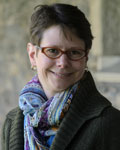2004, 2013
Ellen Stroud
- Associate Professor
- Bryn Mawr College

Abstract
"Dead As Dirt" examines the environmental history of dead bodies in the twentieth-century United States. Changes in funerary practices and technologies of body disposal have shaped American environments, landscapes and lives, as have changes in material bodies themselves. The modern American corpse is toxic: silicone in breasts, mercury in teeth, metal in joints, and batteries in chests have all made body disposal newly complex. This project follows the material journeys of corpses to uncover connections between human bodies and histories of technology, property, politics, and thought. The focus remains on the "nature" of human remains, reconfiguring the place of people within environmental history, not merely as actors, but as constituent parts of dynamic ecological systems.
Abstract
This project examines the environmental history of dead bodies in the twentieth-century United States. Changes in funerary practices and technologies of body disposal have shaped American environments, landscapes and lives, as have changes in material bodies themselves. The modern American corpse is toxic: mercury in teeth, metal in joints, silicone in breasts and batteries in chests have all made body disposal newly complex. This book follows the material journeys of corpses to uncover connections between human bodies and histories of technology, property, politics, and thought. The focus of the project remains on the ‘nature’ of human remains, reconfiguring the place of people within environmental history, not merely as actors but as constituent parts of dynamic ecological systems.

